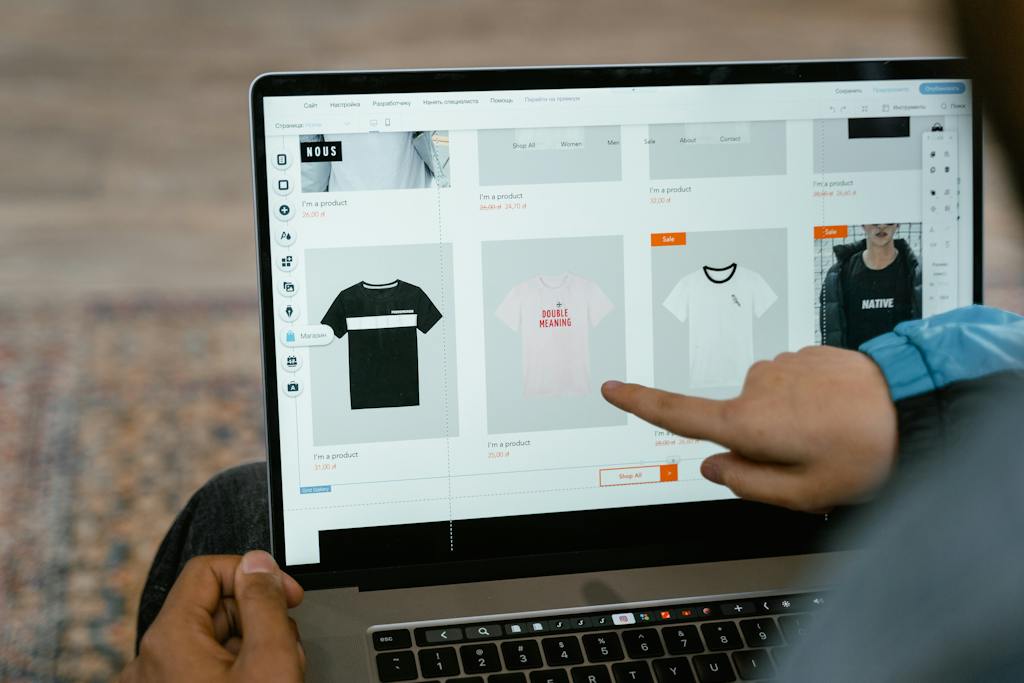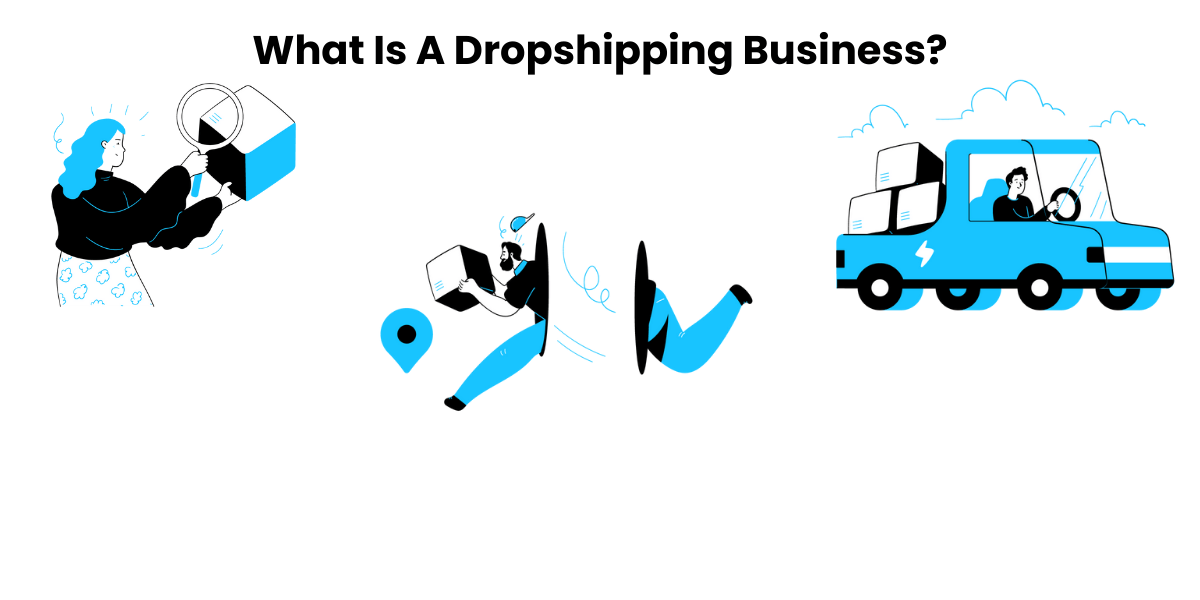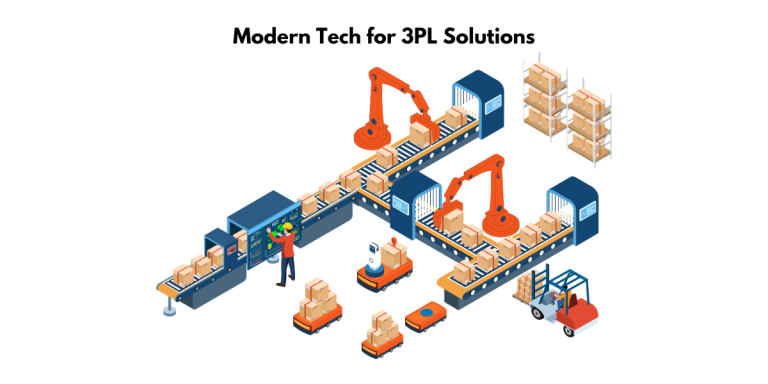The Ultimate Guide to Kickstart Dropshipping: Your Online Business Blueprint
Introduction to Dropshipping as a Business Model
Understanding the Basics of Dropshipping
Dropshipping is a streamlined form of retail business where the seller accepts customer orders without keeping stock on hand. Instead, it sells the product using the dropshipping supplier to handle all inventory and shipment. This ecommerce model simplifies the sales process by eliminating the need to manage physical inventory, making it a popular choice for entrepreneurs looking to minimize upfront investments and risks.
Why Dropshipping is an Attractive Option for Entrepreneurs
Dropshipping is redefining the retail process by offering a more flexible and low-risk option for entrepreneurs. The benefits of integrating dropshipping into a business model include:
- Low Barrier to Entry: Aspiring business owners can leap into the ecommerce space without the significant financial burden that comes with stocking products. A nominal investment is typically enough to cover the basics of web setup and operations.
- Flexibility and Scalability: Entrepreneurs are afforded the freedom to operate from anywhere, test out different markets without heavy investment, and scale with ease as the business grows.
- Reduced Overheads: Without the need for a physical storefront or storage space, overhead costs are substantially lower than traditional retail operations.
- Wide Product Selection: Sellers are not constrained by storage space or capital, affording them the flexibility to offer a vast array of products without the risk of inventory obsolescence.
- Convenience: The logistics of packaging, shipping, and inventory management are handled by the supplier, freeing up time for business owners to focus on expanding their customer base and refining marketing strategies.
All in all, dropshipping stands as a lucrative and accessible opportunity, providing the building blocks to set up a thriving online business with reduced risk and increased potential for growth.

Crafting Your Dropshipping Blueprint
Choosing Your Niche: The Starting Point
Selecting the ideal niche forms the foundation of a successful dropshipping business. Venture into a market realm that you not only understand but also enjoy, as genuine enthusiasm for your products can enhance your business strategy. Here’s how to zero in on your niche:
- Self-Reflection: Consider your passions, hobbies, or areas of expertise. Establishing a business around what you love translates to a natural advantage in knowing the audience and their preferences.
- Market Research: Analyze current trends, demand, and the level of competition. Tools like Google Trends or niche-specific forums can shed light on what potential customers seek. Remember, a highly specific niche, such as eco-friendly pet products, may reduce competition and align closely with customer values.
- Identify Problems to Solve: Look for everyday issues that your potential customers may face, as a new parent might seek tools for easier child-rearing, for instance. Providing solutions to these challenges can carve a natural niche for your business.
- Evergreen Vs. Trending Products: Consider focusing on evergreen products that have consistent demand, as opposed to strictly trending items, which may only be popular for a short period.
Your chosen niche should strike a balance between personal interest, profitability, and market demand. Doing so paves the way for a fulfilling and sustainable dropshipping business. Remember, the more defined your niche is, the greater your potential to become a go-to source within that segment.
Researching Products and Suppliers
Diligent research is crucial to curate a list of products that resonate with your target audience and to find reliable suppliers who can provide these products. Here’s what to consider when accomplishing these key tasks:
- Customer Demand: Identify products that have a high demand in your niche by using tools such as Google Keyword Planner, or by monitoring social media and industry forums. Product research tools like Jungle Scout or Oberlo can also provide insights into popular products.
- Supplier Selection: Platforms like AliExpress make it easy to source suppliers. When using these platforms, scrutinize supplier ratings, reviews, and longevity on the platform to assure product quality and supplier reliability.
- Direct Contact: Once you’ve narrowed down potential suppliers, reach out and establish communication. Inquire about minimum order quantities, production capabilities, shipping times, and sample availability. Clear communication helps prevent misunderstandings and establishes rapport.
- Sample Orders: Before finalizing a supplier, place a sample order to test product quality, shipping speed, and packaging standards. Ensuring these meet your criteria will help provide the best customer experience.
- Supplier Directories: If you prefer a vetted list of suppliers, consider using a supplier directory, but note that they often charge a fee. These directories can guarantee the legitimacy of suppliers, which is a significant advantage for new entrepreneurs who prioritize security and trustworthiness.
- Trial and Research: If you’re unsure about what products to sell, consider starting your research traditionally. Look at competitors, evaluate their product offerings, and identify any gaps that you could fill in the market.
The goal is to develop a reliable supply chain that will consistently meet customer expectations and uphold the integrity of your business. Your products, and the suppliers you choose, ultimately define your brand and contribute to customer satisfaction and repeat business.

Setting Up Your Online Store
Selecting the Right Ecommerce Platform
When choosing the perfect platform for your dropshipping venture, several crucial considerations come into play. You’ll want to pick a platform that is not only reliable but also user-friendly to ensure your customers have a seamless shopping experience. It’s essential to consider the existing customer base of the platform; an established audience can provide immediate exposure and a potential jumpstart in sales.
The level of customization is important too; while headless eCommerce platforms offer great flexibility, make sure you’re ready for the technical demands. Additionally, assess how the platform fits into your business model, its ability to integrate with your chosen dropshipping supplier efficiently, and the financial implications – including setup and transaction fees. Lastly, don’t forget that marketing capabilities and tools for optimization can be make-or-break features for the long-term growth of your dropshipping business.
Some of the leading ecommerce platforms include:
- Shopify: Known for its simplicity and vast app marketplace, Shopify caters well to dropshipping businesses. Its resources include branding tools, a large selection of themes, and robust integration with dropshipping suppliers.
- Volusion: Volusion’s strengths are in its data tools and analytics, integrated dropshipping partnership with US Direct, and a user-friendly interface that’s good for beginners.
- WooCommerce: For those already familiar with WordPress or who want content to play a major role in their online business, WooCommerce provides ample flexibility and control over the ecommerce aspects of your site.
Ultimately, the “best” platform depends on your unique business needs, technical abilities, and long-term goals. By carefully evaluating each option against these criteria, you can select a platform that will serve as a strong foundation for your dropshipping business and offer your customers a seamless shopping experience.
Designing Your Store for Maximum Impact
Designing your store is crucial for capturing customer interest and maximizing sales, so take advantage of our curated list of high-impact articles to unleash your inner designer and create a visually appealing online space. Remember, a clean and attractive layout isn’t just about aesthetics; it’s about functionality and providing a seamless shopping experience. Make navigation intuitive, use high-quality images, choose a color scheme that reflects your brand, and ensure your site is mobile-responsive. A well-designed store not only builds trust with shoppers but also encourages them to stay longer and explore more products, increasing the likelihood of a purchase.
During the design phase, regularly testing your website’s usability and seeking feedback can help you refine the customer experience. Remember, the primary goal is to simplify the path to purchase while providing a visually appealing platform that reflects the unique qualities of your brand. A well-designed store not only captivates visitors but also turns them into loyal customers.

Legalities and Finances in Dropshipping
Establishing a Legal Business Entity
When starting your dropshipping business, it’s crucial to establish a legal business entity to legitimize your venture and protect personal assets. The appropriate structure—be it a sole proprietorship, a limited liability company (LLC), or a corporation—depends on various factors including the desired level of personal liability protection, tax implications, and business goals. While going for a sole proprietorship might seem easier due to tax benefits, it offers no personal liability protection, which could be risky if legal issues arise.
An LLC, on the other hand, safeguards personal assets by creating a separate legal entity, though it comes with its own set of legal and tax requirements. Corporations offer the highest level of personal liability protection but entail complex tax structure and operational demands.
Additionally, implementing a thorough refund policy, clear terms and conditions, and a comprehensive privacy policy not only boosts credibility and consumer trust but also provides an extra layer of protection against legal troubles. It’s imperative to understand the legalities specific to your country and consult with legal authorities to ensure all requirements are met—ultimately granting your dropshipping business a sturdy foundation and peace of mind.
Managing Finances and Tax Obligations
Effective management of finances is critical to the success and sustainability of your dropshipping business. To maintain healthy financial operations and ensure your tax obligations are met, it is essential to rigorously separate your personal and business finances by opening a dedicated business bank account, which simplifies tracking and accountability, and avoids legal complications during tax filings.
Securing a business credit card, particularly those offering rewards, can streamline the purchase process and potentially reduce costs through benefits. Furthermore, obtaining the necessary local permits, like a tax permit and resale certificate, prepares your business for lawful operations. It’s also crucial to familiarize yourself with the state-specific requirements for collecting sales tax from your customers and to understand the intricacies of interstate commerce tax compliance pertaining to your dropship suppliers.
To ease this complexity, consider using professional accounting services or software designed for tax monitoring and remittance. Additionally, anticipating regular business expenses, such as platform fees and ongoing marketing costs, is necessary for budgeting purposes; therefore, setting aside adequate funds is wise. By taking these steps, you will lay a solid foundation for financial health and remain in good legal standing, ensuring the longevity of your dropshipping endeavor.
Mastering Dropshipping Operations
Streamlining Order Fulfillment and Shipping
Effective order fulfillment and shipping practices are key to customer satisfaction and can significantly impact your dropshipping business reputation and customer loyalty. To optimize these processes, ensure that customers receive prompt shipping notifications and packages arrive within the expected time frame. It’s important to guarantee that products are in perfect condition upon arrival and that the packaging accurately represents your brand. Additionally, provide robust customer service by being transparent in your product descriptions and images, offering support across various channels, creating an easily accessible FAQ page, engaging with customers on social media, and having a clear and visible return and refund policy.
Make sure documentation such as instructions and manuals is readily available, and when issues arise, take responsibility and rectify the situation promptly to maintain trust and satisfaction. Remember, with nearly 84% of consumers considering delivery a crucial component of the online shopping experience, partnering with reliable fulfillment services like FBA for faster delivery times could be a strategic move to stay competitive and meet customer expectations.

Providing Excellent Customer Service
Outstanding customer service is the cornerstone of any successful dropshipping business, serving not only to foster customer loyalty but also to enhance brand reputation and differentiate your online store from competitors. With the lack of control over shipping logistics inherent in dropshipping, it’s imperative to establish a proactive customer service strategy that emphasizes transparency and responsiveness at every stage of the customer journey.
Whether it’s providing detailed product information, including dimensions and materials, or offering multi-channel support through live chat, social media, or email, every measure contributes to a seamless experience.
Creating a comprehensive FAQ page and a well-articulated return and refund policy are also critical. They not only alleviate consumer anxieties but also build trust. Ensuring quick, professional responses on social media, and providing thorough documentation and tutorials for products further reinforce customer confidence. Moreover, in the event of issues such as delays or damaged goods, a commitment to resolving problems swiftly and taking responsibility can convert a potentially negative experience into a display of reliability and dedication, prompting customers to return and recommend your brand.
Marketing Strategies for Dropshipping Success
Leveraging Social Media and Content Marketing
Social media and content marketing are powerful tools in driving engagement and generating interest in your dropshipping products. Here’s how to leverage these channels:
Develop a Comprehensive Social Media Strategy
- Identify which platforms your target audience frequents and establish a strong presence there. Focus on creating and sharing content that is relevant to your audience’s interests and behaviors.
- Use high-quality images, thought-provoking captions, and consistent posting to maintain a solid brand image.
Invest in High-Quality Content
- Whether it’s blog posts, videos, or infographics, ensure your content is informative, engaging, and relevant to your niche. High-quality content can attract organic traffic, improve SEO, and build trust with your audience.
Utilize Influencer Collaborations
- Partner with influencers in your niche to reach a larger audience. Influencers can showcase your products in a way that’s relatable and attractive to their followers, encouraging sales.
Engage with Your Audience
- Interact with followers through comments, messages, and posts to create a community around your brand. Prompt responses to inquiries and active engagement in discussions build customer loyalty.
Run Targeted Social Media Ad Campaigns
- Social media platforms offer detailed targeting options for your ads. Use these to reach potential customers who fit your target demographic, interest, and buying behavior criteria.
Incorporate User-Generated Content
- Encourage customers to share their own photos and experiences with your products. User-generated content is more relatable and can serve as social proof to prospective customers.
Create a Consistent Posting Schedule
- Maintain a calendar for regular posts to keep your audience engaged and your brand top-of-mind. Tools like Hootsuite or Buffer can help schedule content across different social media platforms.
Tailor Content for Each Platform
- Customize your content to fit the format and audience of each social media channel. What works on Instagram may differ from what resonates on Facebook or Pinterest.
Track and Analyze Performance
- Monitor the performance of your content and ads to understand what drives the most engagement and conversions. Use this data to refine your strategy and improve results.
By thoughtfully integrating social media and content marketing intoyour business strategy, you can strengthen your brand presence, educate your audience, and drive traffic to your store, ultimately boosting sales and fostering long-term growth for your dropshipping business.
Implementing Effective SEO Techniques
Search Engine Optimization (SEO) is not just a necessity but a continuous effort to enhance the findability and visibility of your dropshipping store in the crowded online marketplace. To elevate your organic traffic, employ strategic SEO practices such as meticulously incorporating long-tail keywords throughout your site’s content, securing valuable backlinks from reputable external sources, and fostering an informative blog that keeps visitors engaged and signals content value to search engines.
Furthermore, leverage SEO tools for keyword insights, and utilize your ecommerce platform’s resources for optimizing title tags, meta descriptions, and headers effectively. Remember, with about 93% of online experiences starting with a search engine, it’s critical to fine-tune every SEO facet to outshine competitors and capture your target market’s attention.
Scaling Your Dropshipping Business
Analyzing Performance and Making Improvements
Continuous analysis and refinement are essential to successful dropshipping business management. Evaluate your sales data, pinpointing popular products and identifying those that underperform to adjust your inventory strategically. Examine your Average Order Value (AOV) and customer retention rates, using tools like Smile: Points & Rewards, Twism, and Birthday Club to incentivize repeat purchases.
Analyze marketing effectiveness by tracking shopper origins, device use, and conversion rates, adjusting ad spend accordingly. Optimize for mobile and international traffic as needed. Set and monitor KPIs to measure progress against targets. Additionally, leverage Shopify analytics for sales and shopper behavior insights, and utilize Google Analytics and Search Console to track and improve SEO performance.
Regularly review third-party social media or Messenger marketing reports to fine-tune your overall strategy. By consistently analyzing your store’s performance and making data-driven decisions, you can enhance profitability and scale your dropshipping business over time.

Exploring Advanced Marketing Tactics and Partnerships
To scale your dropshipping business, consider diving into advanced marketing tactics and foster partnerships that can extend your reach and enhance your brand presence. Here are strategies to help you advance to the next level:
Experiment with Retargeting Campaigns
- Use retargeting ads to reconnect with visitors who have left your site without making a purchase. Platforms like Facebook and Google Ads offer retargeting options that display personalized ads based on users’ browsing history.
Explore Affiliate Marketing
- Set up an affiliate program where influencers, bloggers, or satisfied customers can promote your products and earn a commission on the sales they generate. Affiliates expand your reach and work on a performance-based model, ensuring a cost-effective marketing solution.
Embrace Email Marketing Automation
- Employ email marketing platforms like Mailchimp or Klaviyo to automate communication with your customers. Create email sequences for cart abandonment, post-purchase follow-ups, and regular newsletters with special offers or content relevant to your niche.
Leverage Paid Search
- If organic SEO growth is slow, consider using paid search campaigns to drive traffic. Tools like Google AdWords can help you bid on keywords relevant to your products and get your store in front of potential customers quickly.
Offer Time-Sensitive Promotions
- Create urgency with limited-time offers, flash sales, or promotional events like “Deal of the Day.” These tactics can trigger quick buy-in from customers and increase impulse purchases.
Partner with Non-Competing Brands
- Identify brands that share your target audience but don’t compete directly with your product offerings. Forming co-marketing partnerships can lead to shared marketing efforts and increased exposure for both businesses.
Utilize Customer Data
- Deep dive into customer data to personalize marketing efforts. Recommend products, create lookalike audiences for advertising, or adjust your messaging to appeal to specific segments of your customer base.
Incorporate Video Marketing
- Utilize video content to showcase your products, share testimonials, or tell your brand’s story. Videos are highly engaging and can improve conversion rates by helping customers better visualize the products.
Host Webinars or Live Events
- Offer valuable information and education through webinars or livesocial media events. This can build authority in your niche and present opportunities to softly promote your products.
Participate in Online Communities
- Actively engage in forums, social media groups, or online communities related to your niche. Provide value without overt selling; this can position your brand as helpful and knowledgeable, leading to organic interest and referrals.
Advancing your marketing and partnership efforts requires creativity and a willingness to test new strategies. Keeping an analytical mindset and measuring the success of your tactics will be crucial in understanding what works best for your business and audience. Always be on the lookout for emerging trends and novel marketing opportunities that can propel your dropshipping business forward.


